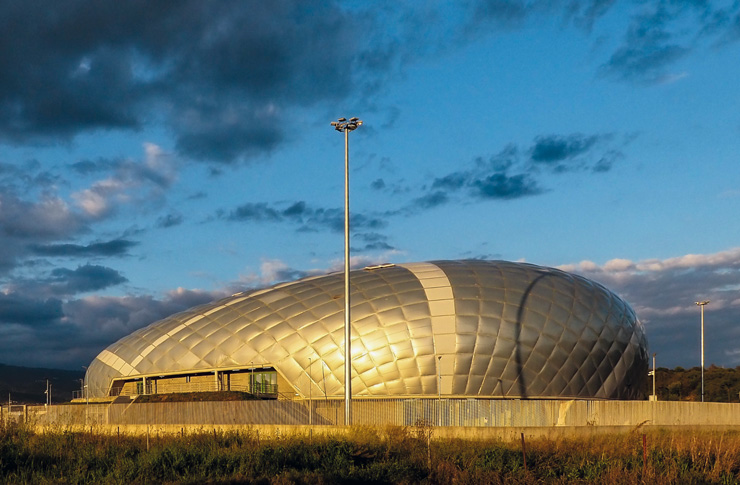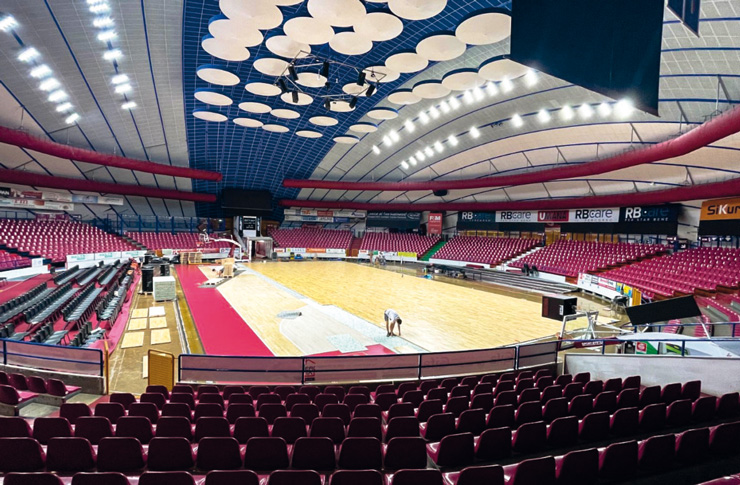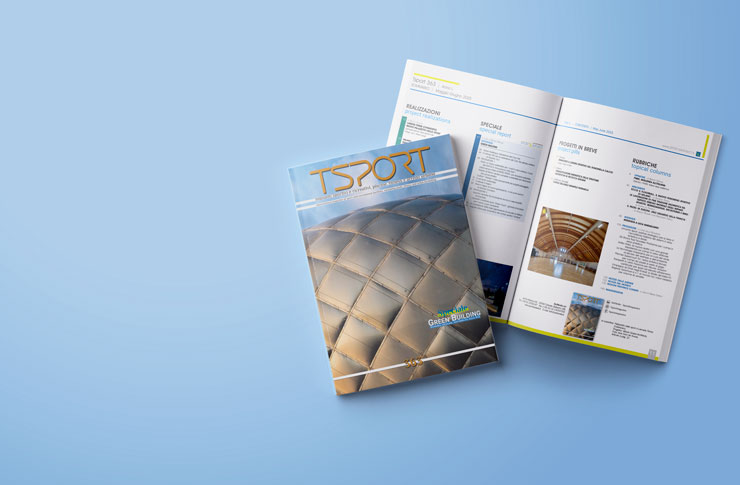Sustainable Designing Special Report – 7. Large sports facilities designed in the USA have been among the first to chase the goals of ‘sustainability’, thanks also to the precise reference given by the LEED certification that assigns a score for each of the factors involved in the design and management of the building.
Large North American sports facilities
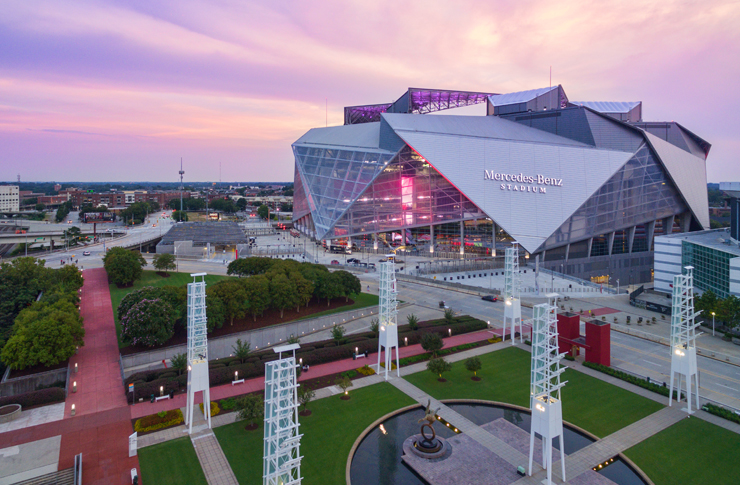
The Mercedes Benz Stadium in Atlanta (Photo Credit: Courtesy of AMB Sports + Entertainment)
Designed and managed to achieve the highest levels of environmental sustainability, the Mercedes-Benz Stadium achieved LEED(R) Platinum certification in November 2017, the first in the world for a professional stadium, with a score of 88, never achieved by any other sports facility (see TSPORT #318).
Among other special features of the project in relation to sustainability, rainwater is collected and reused, limiting the risk of flooding that historically affects this region; 4,000 photovoltaic panels are integrated into the roof, while the sunroof and façade collaborate on the building’s passive cooling strategies.
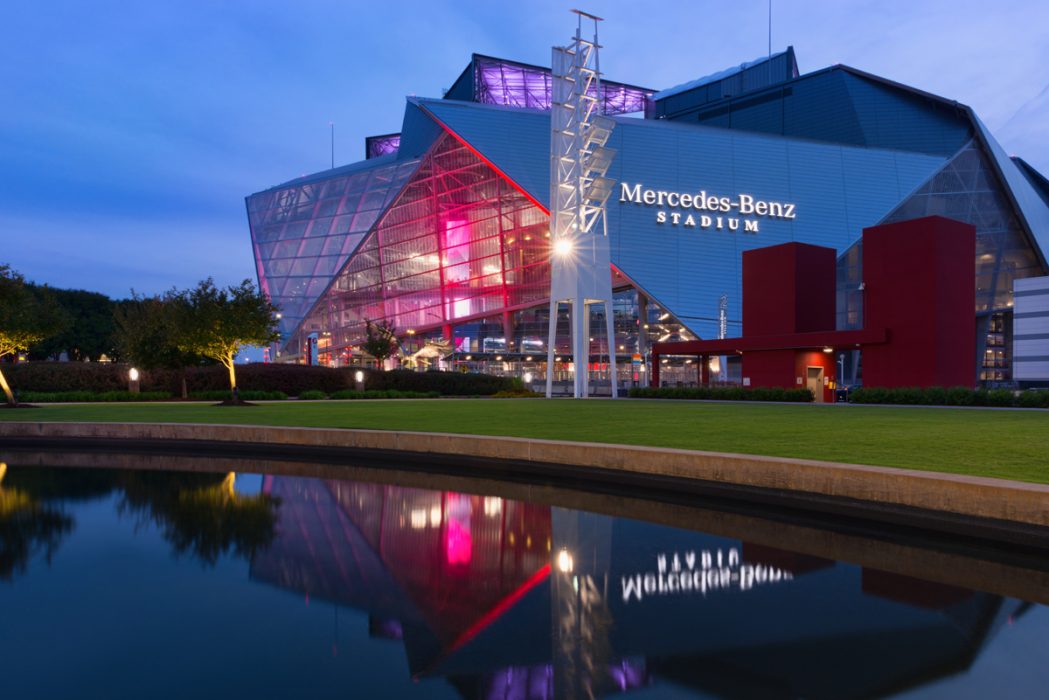
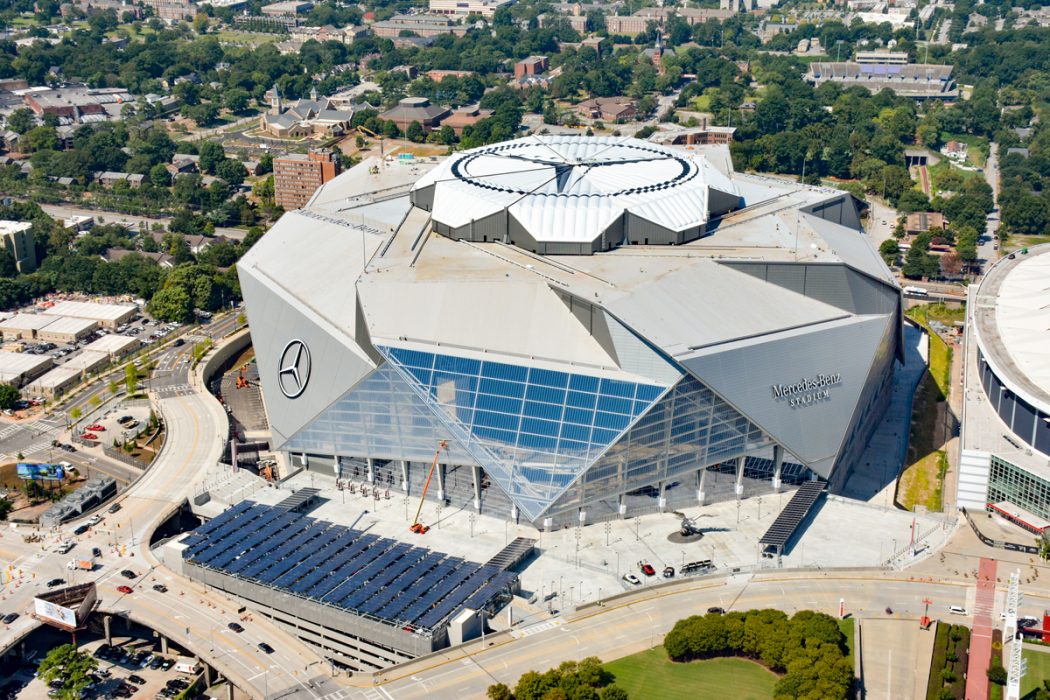
Urban gardens provide reused produce for indoor food services, while connections to public transport, green areas and parking allow the building to share resources with the development of the surrounding area.
Finally, in 2022 the Mercedes Benz Stadium was awarded TRUE (Total Resource Use and Efficiency) pre-certification, an award given to buildings and projects that have pursued Zero Waste programmes and policies.
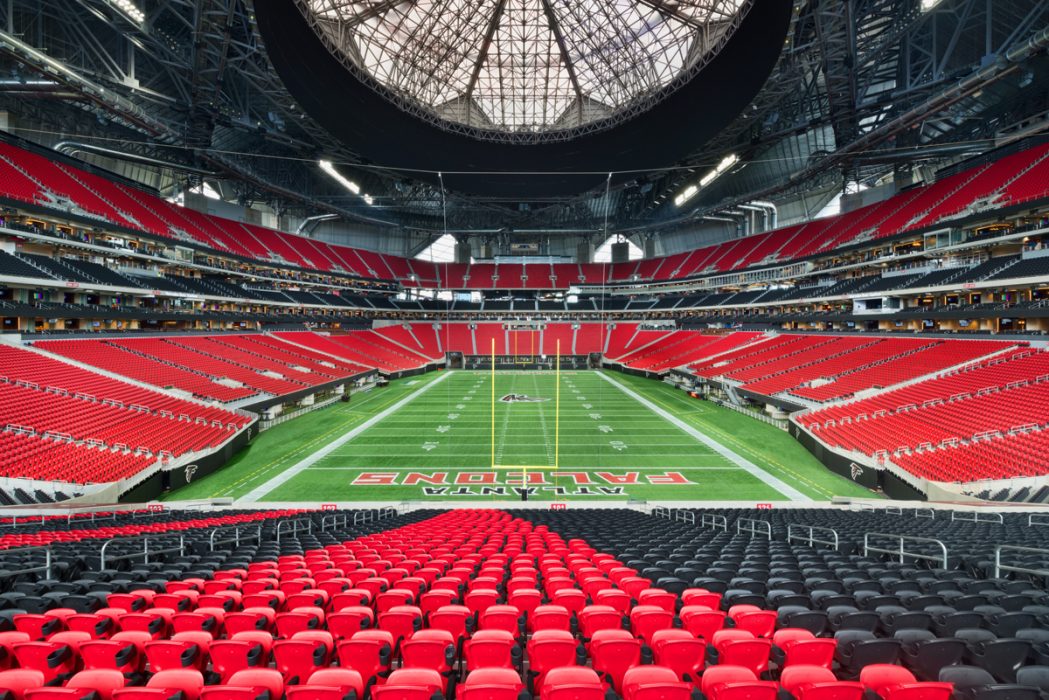
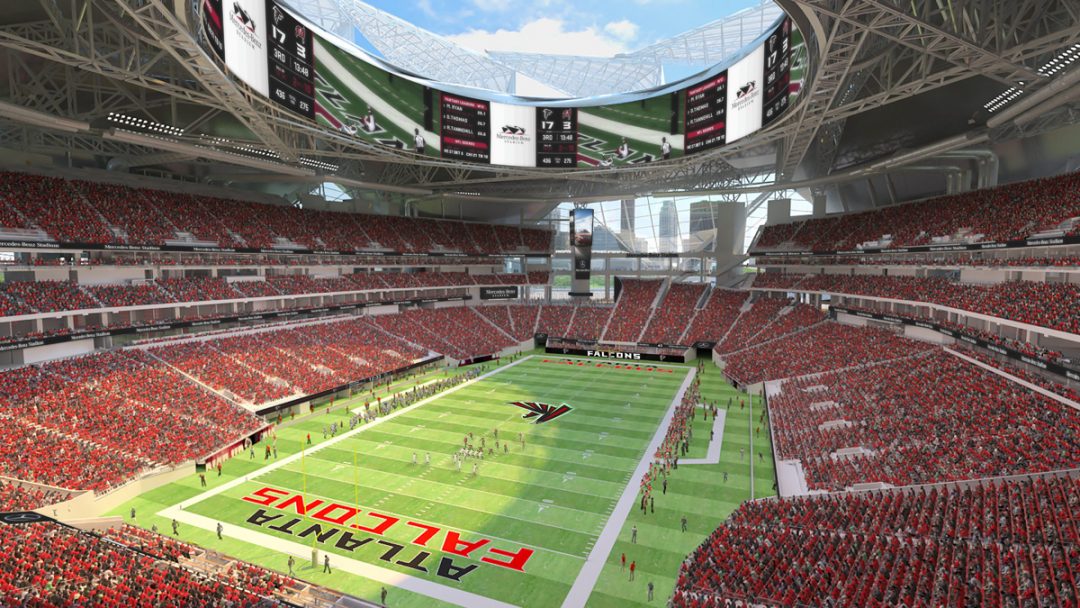
The Climate Pledge, founded by Amazon and Global Optimism in 2019, is a commitment by companies around the world to achieve zero net carbon emissions by 2040 (see TSPORT #344).
When the city of Seattle decided to reinvent and redevelop the historic landmark originally built for the 1962 World’s Fair, planners finalised the design approach to fulfilling the Climate Pledge, leading to the Arena becoming the first in the world to achieve zero-carbon certification from the International Living Future Institute.
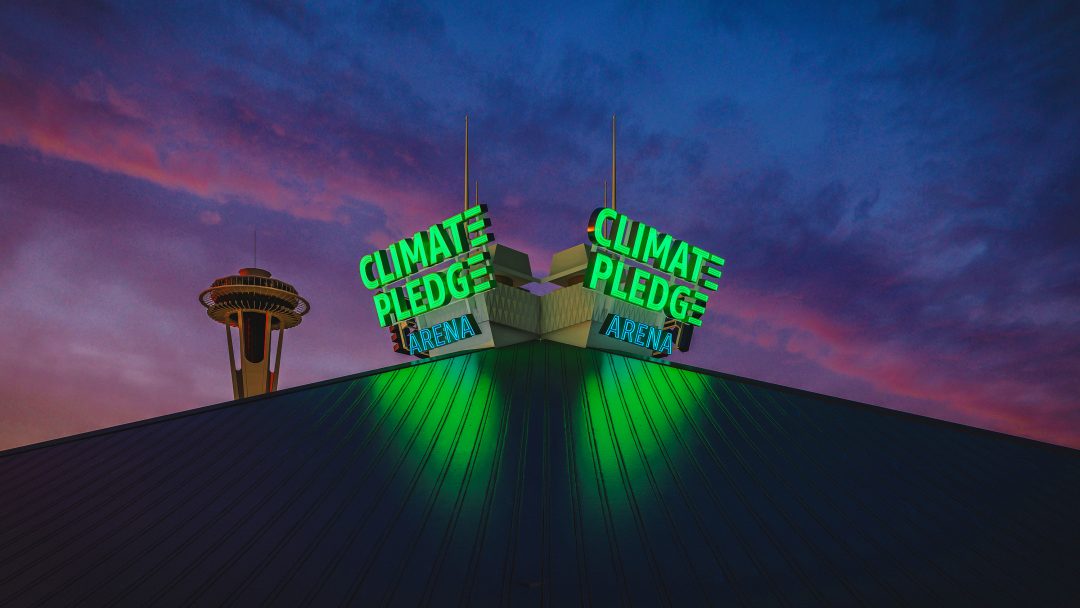
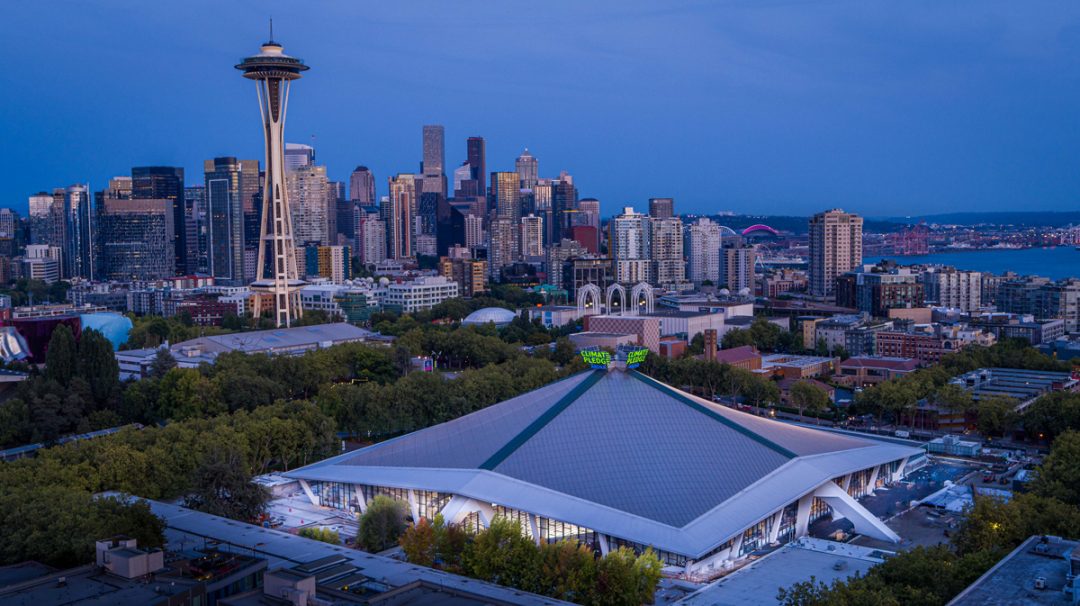
The structure is powered exclusively by renewable energy sources, including solar energy on the atrium roof. The site design builds strong connections to the monorail and provides space for electric vehicle charging stations and bicycle parking facilities. The project also involves water conservation systems, such as collecting rainwater from the roof to turn it into ice for the ista, and zero-waste initiatives. The space houses a 70-metre wall with vegetation hanging on it. The space also features an LED wall thatexplains the importance of a zero-carbon project.
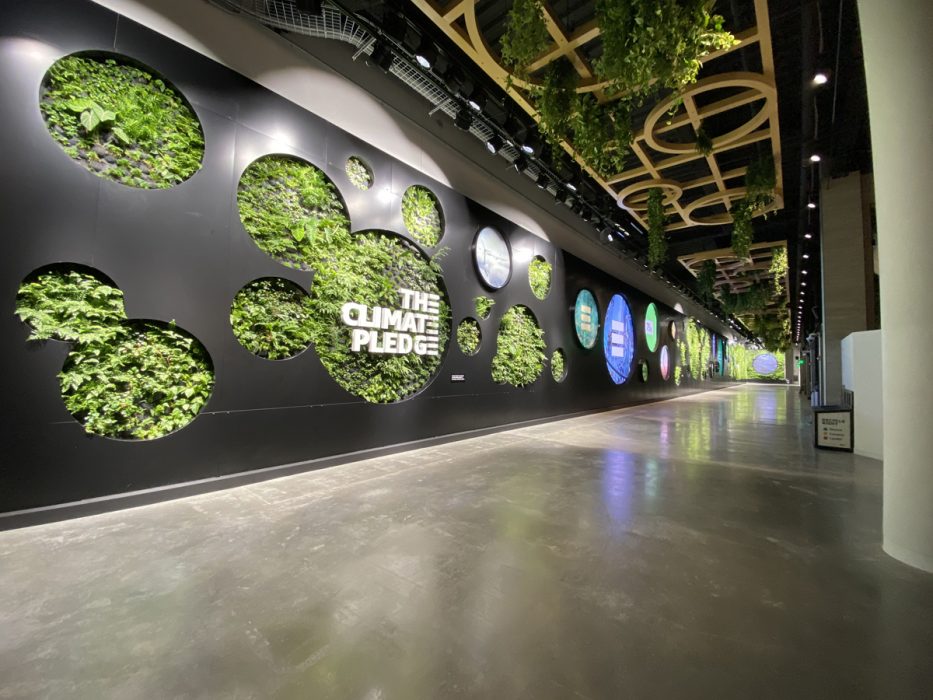
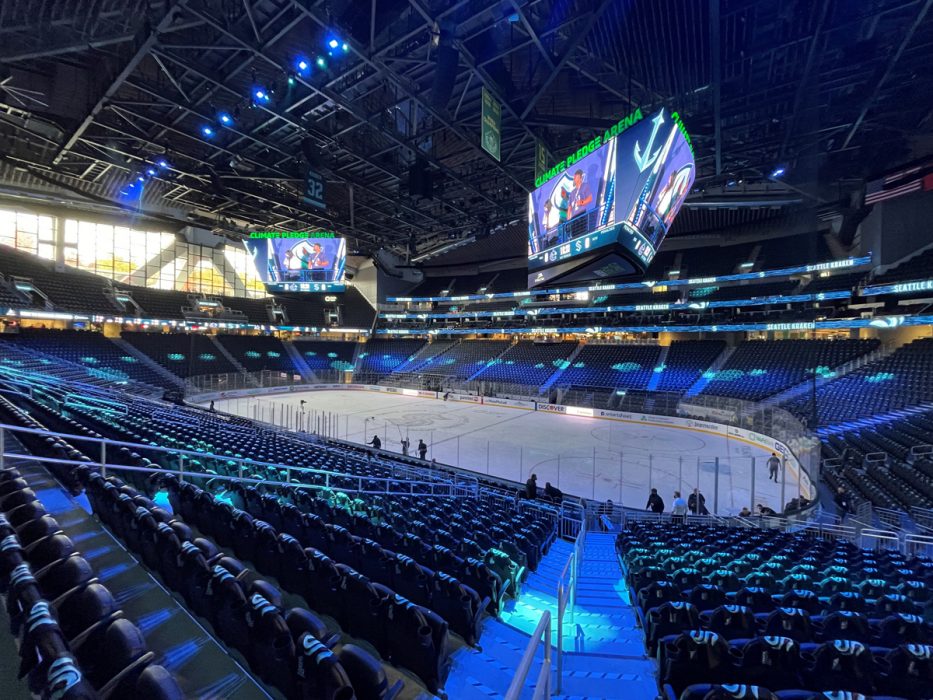
The other topics of the Sustainable Designing Special Report:
- 1 – The limits to growth and the sustainable designing
- 2 – Minimum Environmental Criteria for Designers
- 3 – The climate crisis: mitigation and adaptation
- 4 – Venice 2023: from architecture to art, climate in evidence
- 5 – Sustainability in the new FIFA Guidelines
- 6 – The sustainability of sports facilities.
- 8 – Aarhus + Forest Green Rovers: a vision of environmentally sustainable stadiums
- 9 – Parma: complementary spaces for the Anna Frank School.





